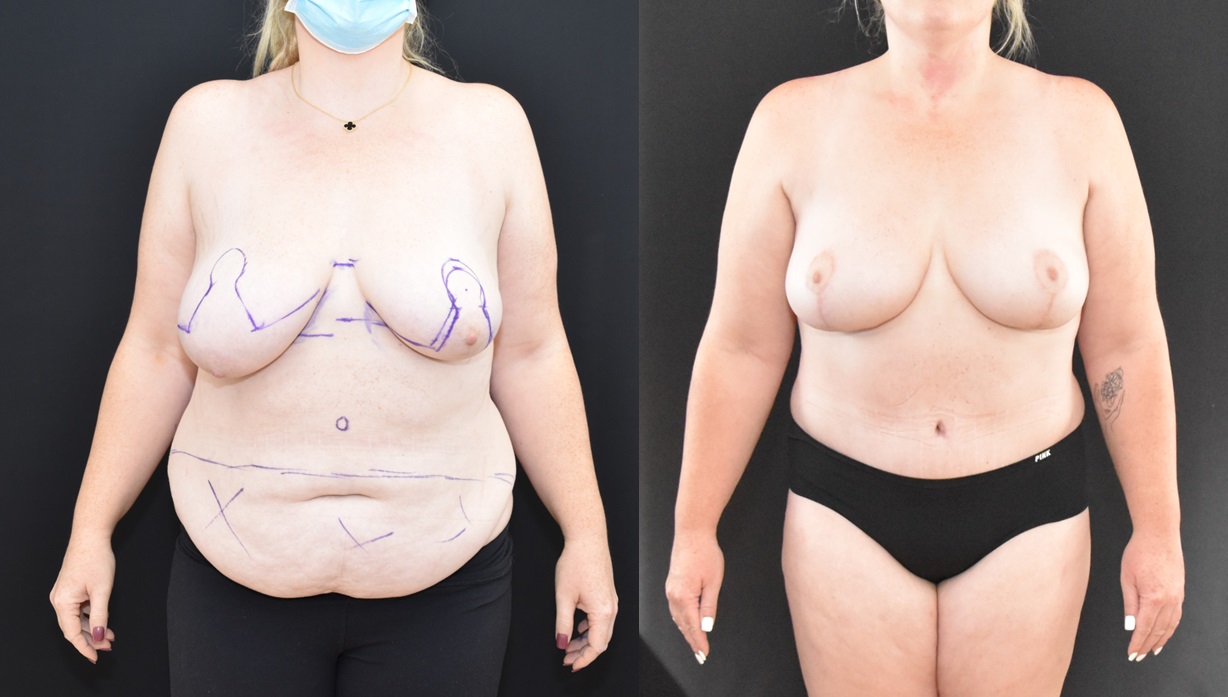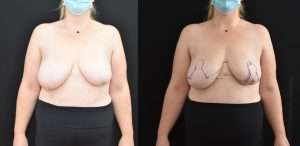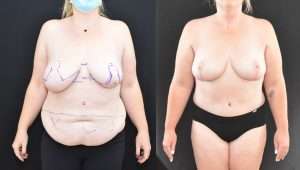Mastopexy and abdominoplasty are a very powerful combination of procedures. Mastopexy involves lifting the nipple areola complex and some component of the parenchyma of the breast. Often a mastopexy may involve removing the lateral aspect of the breast tissue or “bra fat” to improve the contour of the breast.
The mastopexy markings involve determining the position of the nipple areola complex and then removing a portion of the redundant skin of the breast. The resulting scar pattern of the mastopexy is a scar around the areola and then a vertical scar from the areola to the inframammary fold and then a horizontal component along the inframammary fold. For the first 4-6 weeks after surgery, we instruct patients to wash with a mild soap in the shower. Avoid any peroxide, rubbing alcohol, or other chemicals that may cause inflammation. At the 6 week mark patients can use silicone gel sheets to reduce the appearance of the scars, flatten the scars, and prevent keloid formation.
The mastopexy and abdominoplasty procedures are very effective in combination as they make significant improvements to the trunk. The abdominoplasty and mastopexy require a significant amount of energy to heal so a diet high in protein is important.
The umbilicus, or “belly button” remains attached to the abdominal wall during the abdominoplasty procedure. An incision is made around the umbilicus and then the abdominal skin flap is elevated to the costal margin bilaterally. The excess abdominal skin is then excised and then the umbilicus is brought out through a new incision. Patient satisfaction is high with the combined procedures of mastopexy and abdominoplasty.




